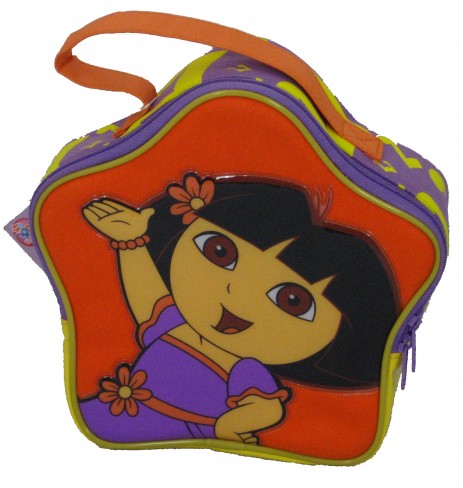Dearests, in this season of love and laughter, when we all become young at heart and so forth, I’m going to point out two new child-related studies that might just make you — well, choke on your egg nog. Luckily, I’ve also found some handy resources that will keep your holidays happy.
 Cute — but toxic, according to new tests.Courtesy HealthyStuff.orgShop smart for your kids, or not at all: A test of 700 toys spearheaded by HealthyStuff.org found toxic chemicals in a third of them, including lead, cadmium, and mercury. The word you’re looking for is: Yikes! There’s some good news, though, says HealthyStuff: first, the number of toys they’ve tested that exceed federal lead limits has actually decreased by two-thirds since 2007. And second, in a sort of glass-half-full spin, HealthyStuff points out that two-thirds of the items they tested didn’t contain toxic chemicals! Which means toy manufacturers can do better, and smart shoppers can score.
Cute — but toxic, according to new tests.Courtesy HealthyStuff.orgShop smart for your kids, or not at all: A test of 700 toys spearheaded by HealthyStuff.org found toxic chemicals in a third of them, including lead, cadmium, and mercury. The word you’re looking for is: Yikes! There’s some good news, though, says HealthyStuff: first, the number of toys they’ve tested that exceed federal lead limits has actually decreased by two-thirds since 2007. And second, in a sort of glass-half-full spin, HealthyStuff points out that two-thirds of the items they tested didn’t contain toxic chemicals! Which means toy manufacturers can do better, and smart shoppers can score.
The really good news, at least for confused consumers, is that HealthyStuff is creating a searchable database of products. Our friends at Consumer Reports also offer a comprehensive toy buying guide, including recommendations by age group, and a piece on deciphering eco-claims on green toys.
Of course, you could also subscribe to my latest revolutionary scheme: the No Toy Christmas. Join me in refraining from showering your children and the children of your loved ones with unnecessary doodads! Give them a handmade item, a dinner out, a trip to the museum, or a big hug instead.
Knocked up? Knock on your rep’s door: The Environmental Working Group has just released a study that found, for the very first time, BPA in the umbilical cord blood of U.S. newborns. The study was small, looking at ten babies of African-American, Asian, and Hispanic descent. But nine out of ten were positive for BPA. “Each time we look for the latest chemical of concern in infant cord blood, we find it,” said report co-author Anila Jacob, M.D., an EWG senior scientist. “This time we discovered BPA, among other dangerous substances, in almost every infant’s cord blood we tested.” Those “other dangerous substances”? There were 232 of them, including a rocket fuel component, a flame retardant used on computer keyboards, fragrances used in cosmetics, and members of the Teflon family.
The EWG study follows hot on the heels of a November study from the Washington Toxics Coalition that tested nine pregnant women and discovered that they were all contaminated with chemicals found in everyday products.
It is freaky stuff, my dear readers. In our rush to lead a comfortable, well-kitted life, we are poisoning our next generation before they even draw breath. It’s like something from science fiction, no? There are two solutions here, one political, one personal: First, we must push for reform of our country’s chemical regulations. See EWG’s work on that issue and find out more about the EPA’s intentions. And then, besides becoming chemical-reform activists, we must make healthier choices at home. This will not eliminate our exposure to toxics, but it will help. Here is a thorough list with tips on food, cleaning, and more — again from the Washington Toxics Coalition. To whom I send a big ‘Mwah!’ and wishes for a safe and healthy Gristmahanukwanzakah.
Got questions? Umbra’s got answers. Drop her a line!



